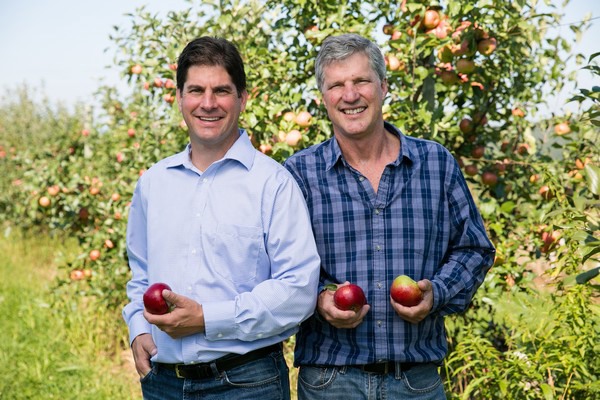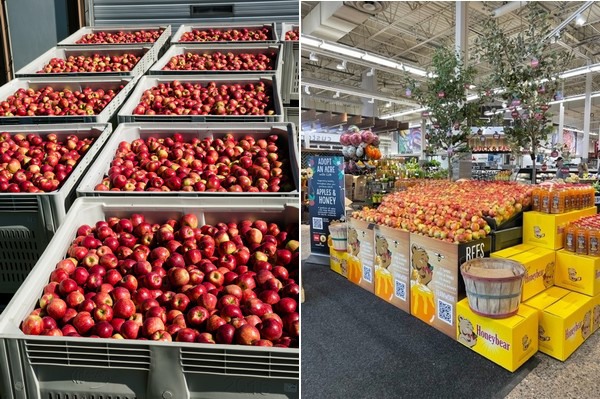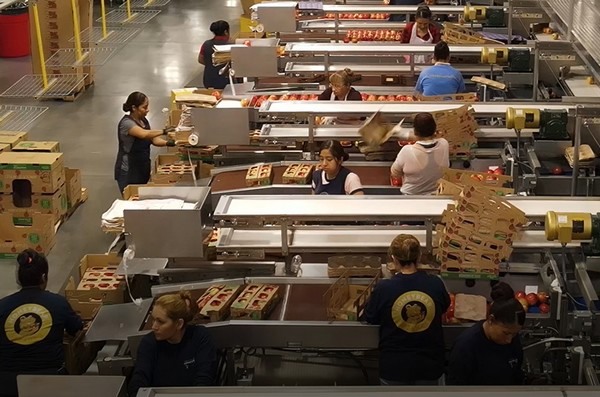The import apple season has started earlier than usual following Washington’s smaller 2022-2023 crop. Don Roper with Honeybear Brands says the marketing window for imported apples will be expanded and that fruit is already on the water from Chile. “While each variety has a different start date, in general, the import season starts April-May. This year it’s March to early April when we’ll have started a fair amount of the varieties,” he says.
 Don Roper and Fred Wescott of Honeybear Brands.
Don Roper and Fred Wescott of Honeybear Brands.
Imports are largely coming from Chile and while other countries such as New Zealand also send apples, it’s not sending as much as it used to given it prefers the trading zone within its north-south corridor which includes Asia.
Domestically, supplies of apples out of Washington are tighter. “This has been a significantly short crop year in 2022 out of Washington--that crop is about 100 million boxes down from about 121-122 million boxes last year,” says Roper.
 Domestically, supplies of apples out of Washington are tighter.
Domestically, supplies of apples out of Washington are tighter.
Varietal notes
On varietals, Honeycrisp supplies are significantly down which means there likely will be supply gaps of the popular apple. On Galas, there are plenty of small galas in storage from both the Midwest and Washington--however large Galas supplies are tighter and there should be strong import demand. There are also a lot of large Fujis in the U.S. but a lack of small Fujis in Washington and the same goes for Granny Smith. “We will also see a fair amount of Pink Lady imports come in. Part of that is driven by a shorter crop of Pinks as well as some condition issues due to the late harvest of Pinks this year,” says Roper.
On top of lower supplies, there was also strong demand in the fall which has also impacted overall supplies when compared to the prior year. However, now demand is slower. “This is the time of year when citrus and other commodities take center stage so we expect a little drop-off,” he says. “However the prices have also been raised quite a bit and with the price increases, we’ve seen overall slower movement.” That said, movement is anticipated to stay steady over the next several months.
 The movement of apples is anticipated to stay steady over the next several months.
The movement of apples is anticipated to stay steady over the next several months.
“This was an extremely short year for the total U.S. crop with Washington down nearly 20 percent and while the Eastern growing regions had crop increases, they did not offset the loss in Washington,” says Roper. “Looking ahead, we feel confident that the crop year will not repeat itself and early indications--bud counts in orchards--support our projections. This will be good for the apple industry as we will come into a very empty retail pipeline next fall.”
 For more information:
For more information:
Don Roper
Honeybear Brands
[email protected]
www.honeybearbrands.com










